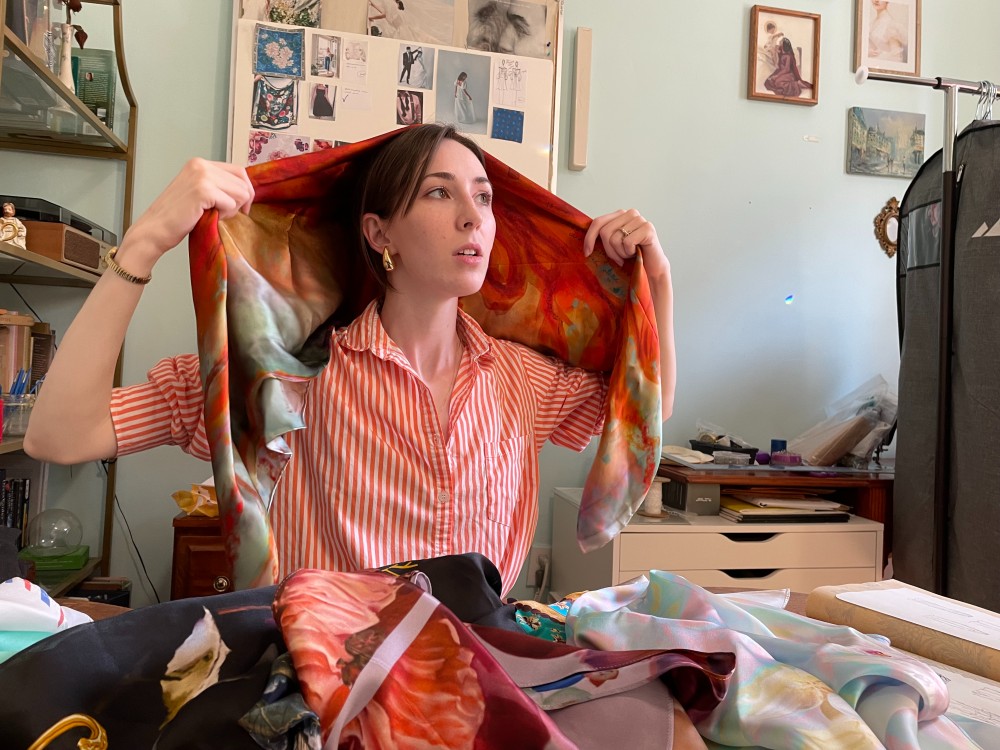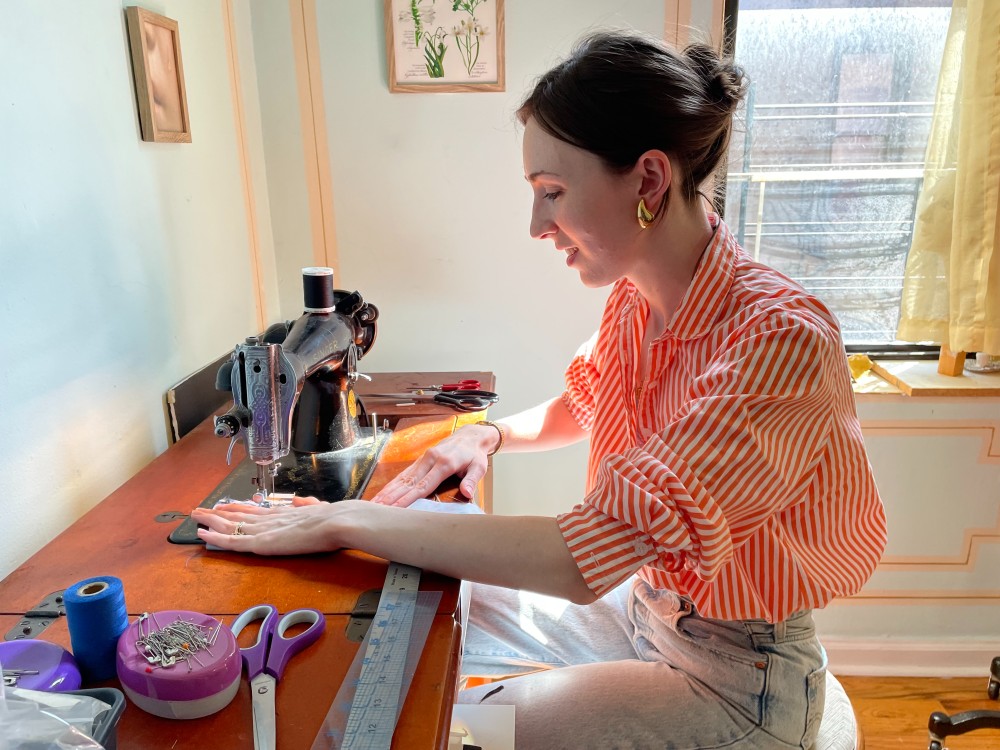
CROWN HEIGHTS — The tradition of Catholic women wearing veils to church, which all but disappeared after Vatican II, is seeing something of a revival these days — if a boost in sales at Veronica Marrinan’s clothing company is any indication.
Marrinan, the co-founder of Litany NYC, a faith-inspired online company she operates out of her Crown Heights apartment, said sales of her religious-themed scarves have significantly increased over the past year.
“We’ve made more in our past year of business than we did in our first three years,” said Marrinan, a Catholic who launched Litany NYC in 2020 and designs all of the clothing she sells.
Marrinan’s customers have told her that they like to tie the beautiful silk scarves around their heads and wear them as veils in church — something she has done when attending Mass at her church, St. Joseph’s in Greenwich Village.
“One woman wore our St Joseph’s scarf on a pilgrimage, and then she wore it again,” Marrinan recalled. “She had their feet washed at the Holy Thursday Mass and sent us a picture.”
Litany NYC’s catalog includes scarves with names like Resurrection, Cana, Holy Family, Our Lady of Lourdes, and St. Joseph Spouse of the Lady,
The company has seen an increase in sales of 18% this year. The Mary, Mother of the Church scarf has seen sales double while other big sellers have seen significant jumps, including a 40% increase for the St. Joseph scarf and a 25% increase for the Holy Family.
The rise in sales has led Marrinan and Litany’s assistant designer, Rebecca Kreamer, to think more about veils.
“With such a big growth, Veronica wants to design more in the next collection,” said Kreamer, who is also Catholic. “She was thinking of doing lace since, historically, veils have been made out of lace. … We see the need,”
There are no widely available statistics on the number of women who wear veils to church, but Catholic bloggers and journalists have noted a shift toward veils in recent years.

In 2022, Religion and & Politics, a newsletter from the John C. Danforth Center on Religion and Politics at Washington University in St. Louis, featured an article headlined, “Why a New Generation of Women is Wearing Chapel Veils.”
The article reported that the return-to-veil movement is led predominantly by Millennial women, many of whom also prefer to dress modestly in long skirts and dresses.
It’s a shift Kreamer is pleased to see.
“I’m excited to see how things are changing for women in the church, especially now that women are getting more comfortable and not feeling like they’re sticking out if they’re veiling,” she said. “They’re having their moment with Christ, and that’s really what religion is about.”
Adorning a veil for Mass was a rule enshrined by the Catholic Church in the Code of Canon Law in 1917, although the custom had been in place for centuries and is even mentioned in the New Testament. In his First Letter to the Corinthians, St. Paul warns, “For if a woman does not cover her head, she might as well have her hair cut off.”
The veil covering the head was seen as a symbol of modesty and purity before God.
However, the custom largely went out of practice after the Second Vatican Council in 1962 sought to modernize aspects of the Church. From the late 1960s into the 1970s, as the feminist movement swept the country, veils came to be seen by some as a symbol of subservience.
The Vatican Congregation for the Doctrine of the Faith issued instructions in 1976 indicating that the rule regarding head coverings would no longer be enforced. In 1983, the Vatican issued a Code of Canon Law — which is still in effect today — that does not mention veils.
Marrinan said scarves weren’t originally part of the business plan, but she’s happy to see women embracing the head covering at Mass.
“We’ve noticed so many people very interested in the aesthetics of the Catholic faith,” she explained. “And if it brings them closer to the faith, that’s good.”
